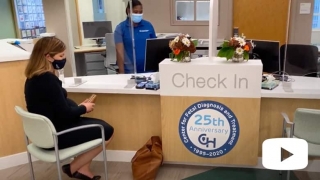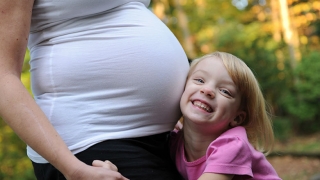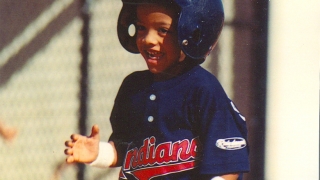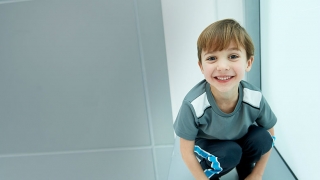In late 2007, during a detailed ultrasound at 18 weeks of pregnancy, Nora and Jeff Nazzaro learned that Max, one of the fraternal twins Nora was carrying, had a rare birth defect.
Known as a congenital cystic adenomatoid malformation (CCAM), it meant that a piece of abnormal lung tissue occupied the lower lobe of Max’s right lung.
Initial feedback from their ultrasound specialist was bleak. A second opinion was a bit more positive, but the physicians had limited experience with the condition. Nora and Jeff sought as much advice as possible.
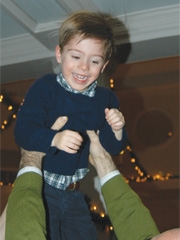 “We turned to my OB, Dr. Albert Sassoon, as well as my father, Jairo Garcia, MD, who is an in vitro fertilization pioneer,” Nora says. “Their advice, in addition to our research of the condition, pointed directly to CHOP.”
“We turned to my OB, Dr. Albert Sassoon, as well as my father, Jairo Garcia, MD, who is an in vitro fertilization pioneer,” Nora says. “Their advice, in addition to our research of the condition, pointed directly to CHOP.”
The Nazzaros traveled from their Bronxville, NY, home to the Center for Fetal Diagnosis and Treatment and found the hope and help they were looking for. After a comprehensive evaluation, a multidisciplinary team met with the couple to explain the diagnosis, go over treatment options and possible scenarios, and devise a plan for the pregnancy.
The Nazzaros knew that while most doctors see the occasional case of CCAM, the Center at CHOP sees patients like Max every day. “Just feeling like we were sitting with a group of people who knew what they were talking about was reassuring,” says Jeff. “Only at CHOP did we get a clear explanation of what the range of outcomes might be.”
Nora switched her OB care to CHOP and traveled to Philadelphia twice weekly for evaluations to monitor the growth of the CCAM and ensure it didn’t compromise Max’s survival or that of his twin brother, Alex. Five weeks after she and Jeff temporarily relocated to Philadelphia, the babies were born.
Max’s CCAM had grown so large that it had limited the growth of his lungs, resulting in pulmonary hypoplasia, a life-threatening condition characterized by underdevelopment of the lungs that can cause problems with breathing, feeding, cardiac function and development. Less than 24 hours after delivery, N. Scott Adzick, MD, director of the Center for Fetal Diagnosis and Treatment, removed the CCAM.
Ongoing care
After surgery, Max’s growth and recovery in the Harriet and Ronald Lassin Newborn/Infant Intensive Care Unit (N/IICU) was so impressive that N/IICU staff nicknamed him “Mighty Max.” After five weeks, he was able to go home. Now 3 years old, Max gets wheezy sometimes when he gets colds, but otherwise is a little dynamo.
By the time he is 8, his lungs will have grown to fill the space the CCAM once occupied. By that point, his CHOP doctors say his lungs will be so strong he could run a marathon if he wanted to.
“When we think of the range of outcomes we were told at first, he’s not even on the scale,” Jeff says. “We credit everybody at CHOP who helped us before, during and after surgery. There’s no question that without them he wouldn’t be here. They saved his life.”
“When we look back at this difficult time we could not have gotten through it without the help of our faith and our family support, as well as the help from those at CHOP,” Nora says.
CHOP’s commitment to Max’s well-being continues through the Pulmonary Hypoplasia Program (PHP), a comprehensive, interdisciplinary program that provides care from birth through long-term follow-up for children born with conditions that can restrict lung development. The PHP is the first follow-up program of its kind to follow patients like Max, with the full range of conditions that cause small lungs.
The PHP includes pediatric pulmonologists, cardiologists, surgeons, audiologists, social workers, developmental pediatricians, developmental psychologists and dieticians. This multidisciplinary team of specialists collaborates with the Nazzaros to improve Max’s pulmonary health, evaluate his neurodevelopmental growth, monitor and treat any surgical issues that may arise throughout childhood, meet nutritional needs, and help locate resources and support services near their home.
“The idea is to optimize each child’s outcome,” says Holly Hedrick, MD, director of the program. “It’s not just about whether children live, but how are they developmentally and with regards to feeding and growing? Are they functioning normally? The program makes it easier to track outcomes because patients are followed by the same specialists, all of whom have a special interest in these patients. By working together, we try and deliver a unified plan to the families. ”
Helping children breathe easier
The Nazzaros channeled their appreciation for the care they received at CHOP into a donation to support the PHP. Their gift will help CHOP report on the long-term outcomes for patients who have received or are currently receiving follow-up care. Over time, Hedrick believes the work will yield insights that improve therapies and follow-up.
“It was really important for us to give a gift that was relevant to Max’s experience,” Nora says. “We think his case provides hope to people, and we feel really comfortable knowing he’s being watched by the best people in the world. Hopefully, by contributing to this program, we’ll help the team to analyze data and make it just a little bit easier for the next person who goes through what we went through.”
Originally posted: December 2012
